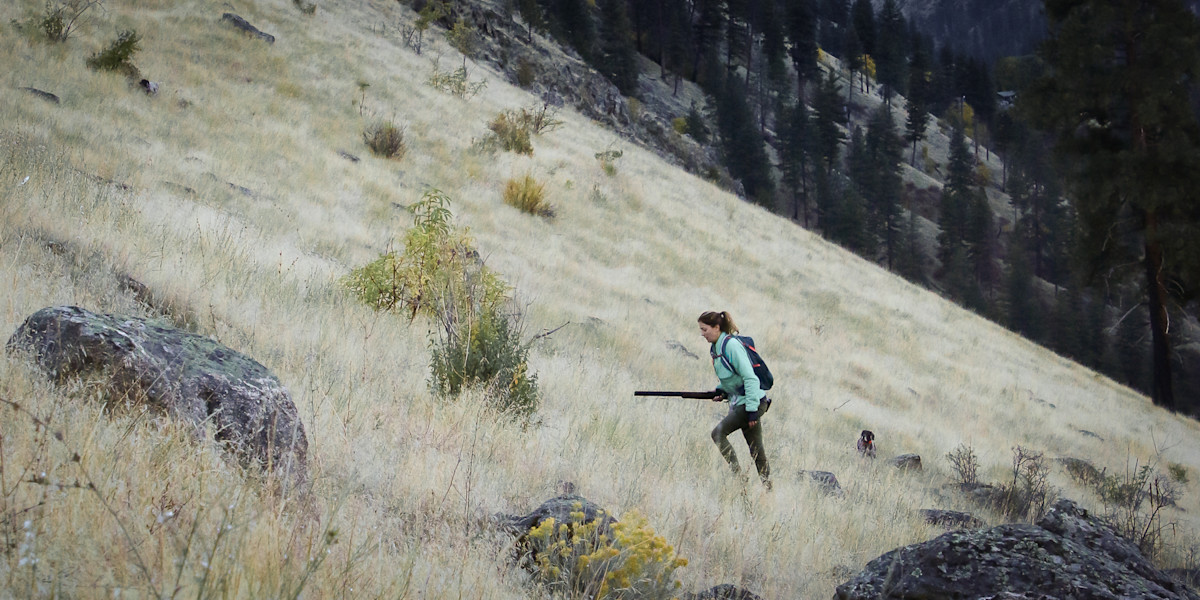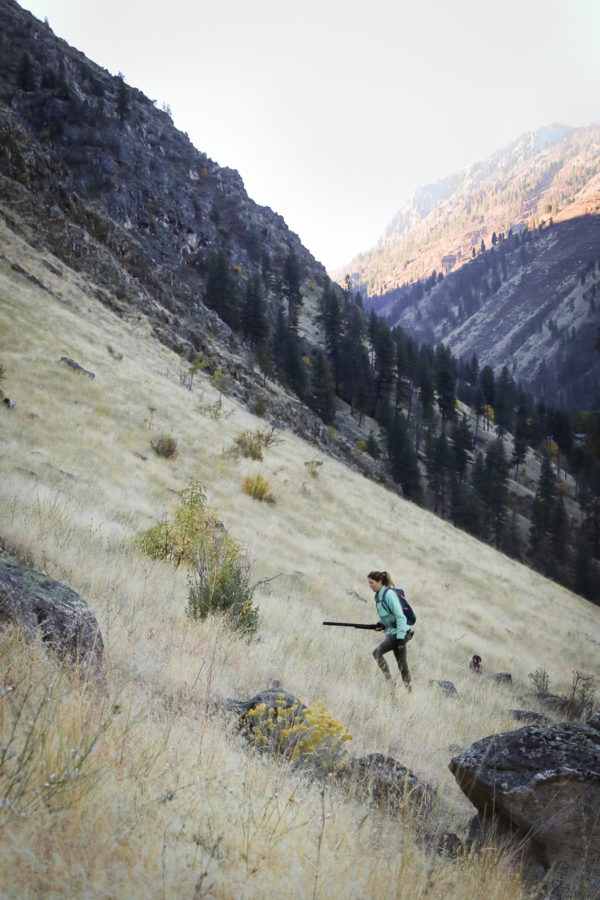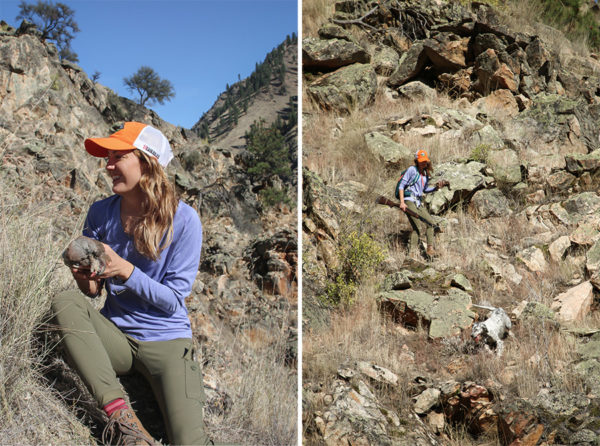
We are driving along the river at the base of rocky canyon walls when we suddenly come to a stop. There is a lone chukar hanging out on the berm, taunting, offering an easy way out. I take it as an omen of events to come because these fast climbing birds will, without a doubt, make you work for it at some point. Seeing this one on the road before the hunting gear is even unpacked can’t be a good sign.
There is a theory among upland hunters that the pursuit of truly wild birds involves putting miles under your feet, traversing difficult terrain, and enduring tough weather conditions. These hardships help define success in the field, regardless of the heft of the game bag. For reasons such as these, I have always been intrigued by the pursuit of the notorious devil bird. So, this season I met up with a group of friends to test our limits in search of Chukar, Huns, and grouse for a week on Western Idaho’s vast public lands.
We set camp in a small grove of pines that led out to a sandy beach along a river. From there, we could view the canyon wall false summit that would lead one to believe they are relatively easy to hike. We were soon proven very wrong.
The challenge begins on day one, with a narrow view up the canyon of bluebird skies. We decide to take a short hike to ease our legs into the week. After climbing the chosen hill, we get a much broader view and see a wall of dark clouds looming down. My gut says it might be best to retreat, but the birds are running up a draw ahead of us and the eager Llewellyn and lab I am hunting behind have no intention of leaving.
We continue climbing and within minutes the wind suddenly shifts, temperature drops, and the hail storm begins. Now soaking wet, we race down as fast as we can before hypothermia arrives. We make it back down safely while my new shotgun gets a baptism.
On the second day we target a larger mountain that looks promising. The steep terrain is slick with tall cheatgrass, making for tough ascents while hopping from rock-to-rock seeking steady footing. We pick a cut and follow the dogs. Off in the distance just below me, I see my first Chukar covey flush down and away, far out of reach. The hail of shotguns offers hope.
We head toward a large outcropping of boulders. Ida the lab is churning circles as the area is fresh with scent. I prepare to follow and start to make my way across a boulder. I switch my shotgun to my left hand, and use my right to wrap around a rock for support. The moment my hand reaches into the crevice I feel movement.
I screamed as an unexpected puff of feathers and woosh of wings is right in my face. I try to gather myself and send a fleeting shot at this hand-flushed bird.
Miss.
I end the day grateful I didn’t fly off the ledge and am reminded of the importance of sure footing on this difficult terrain.
The next morning we decide to tackle the beast across the river from our campsite. The Chukars roosting on the rocks above taunt us so we decide to take them up on their vocal invitation to chase. We load gear and dogs in a raft and ferry across.
We start at the base of the mountain as we have all week and work our way up. At this point, the nagging pain in my right knee turns severe. It’s a new injury that chooses the worst times to reappear. I start climbing, but don’t want to hold anyone up and lag far behind. I return to the river feeling defeated because I know these birds race uphill to evade, and I end up stuck on a beach with a bum knee.
After some time, my friend Brian and his bird dogs reappear heading down the mountain to try and flush a bird my direction. He tells me to just make it up a quarter of the way to a group of rocks. Using my shotgun as a walking stick, I eventually make it there. I take one look at Rio, the small yet incredibly tough Llewellyn, and see that she is working so hard to find me a bird and I know I can’t disappoint. And with that, something takes over and I keep climbing.
The wind is traveling up the mountain. We race to out-climb the birds, hoping to get on top when the dogs catch scent and whip us back down. The dogs are tracking.
We move laterally across spines through the thick maze of thorn bushes and sharp rocks. According to the dogs, the birds are running so we keep moving, gaining elevation. Rio locks up for a brief moment then repositions. We know we are finally closing in on a covey.
Rio freezes again, tail high and intense, and this time she refuses to budge.
Using the lesson of the previous day, I find the best ground I can and steady my feet on the narrow ledge ready for Ida to close and flush. The covey erupts and crosses right from above at only 20 yards. Without a blink I mount the gun and watch a bird fold across another cut into a pile of boulders.
I pause in that moment of excitement for what seems forever when I hear Brian shouting and recall that I still have a second shell and more are birds flying. Despite missing the second shot, I know I am grinning ear-to-ear having just shot my first Chukar. I pick up my bird, look down and realize we have nearly climbed to the top of the mountain and the grandiose view before me is breathtaking.
That evening we pluck my bird and the birds my hunting companions harvest, use scissors and cut out the spine to spatchcock them. We’re sure to save the hearts for an appetizer.
Brushed with oil then seasoned with salt and pepper, the birds are roasted above a hot fire, skin down first. After a quick flip, I baste with a simple glaze made by reducing a jar of apricot preserves with shallots and jalapeños in a cast iron skillet.
Exhausted from the day, we gather around and watch the glaze caramelize over the flames, mouths watering. While I eat, I can vaguely make out the backdrop of the mountain we hunted just hours before through the night sky. I can still hear the mocking cackle from the surviving Chukars above, daring us to return.
Even though I know the amount of calories this single bird provides is far less than the amount my body burned chasing after it, I wouldn’t want this hunt to have gone any other way. In this moment, I can’t help but feel an overwhelming amount of gratitude because I know that I have never had to work so hard for one, tasty bird.
Featured image by Ultimate Upland.









